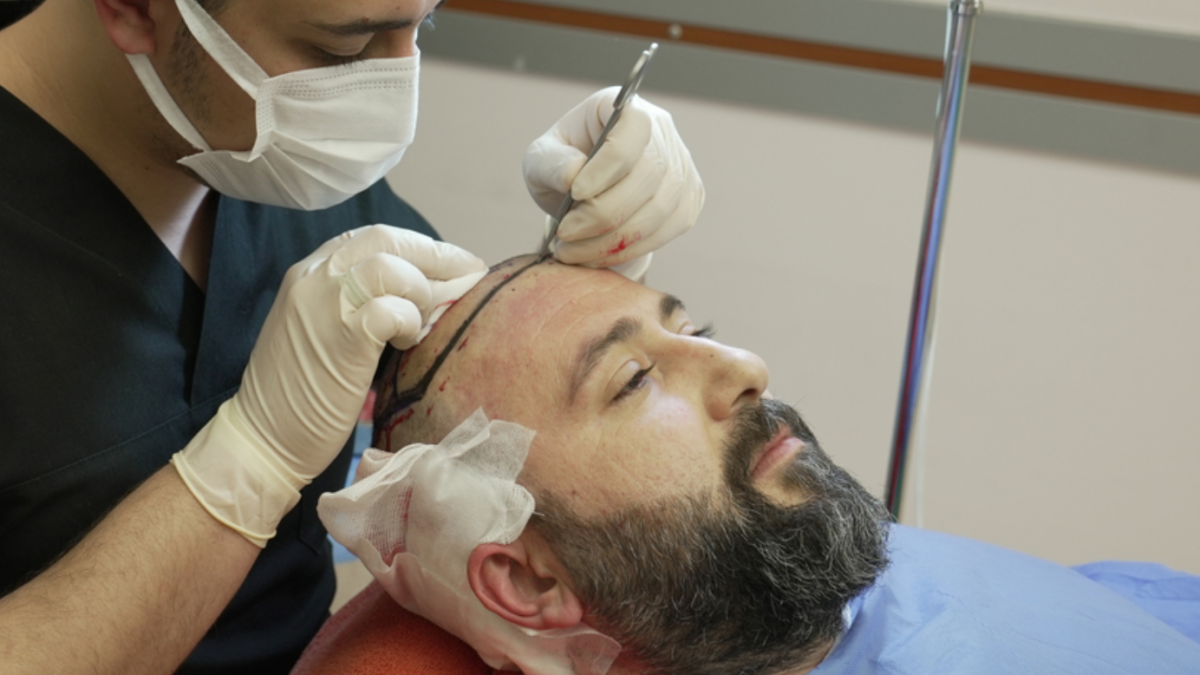Hair transplantation has surfaced as a lamp of stopgap for numerous battling hair loss, offering a chance to recapture both hair and confidence. still, the trip does n’t end with the procedure; it begins again postoperative care, a critical phase for icing the stylish issues.
moment, let’s focus on a common post-transplant concern scabs. While not the most glamorous content, understanding how to manage these small but potent signs of mending is crucial to a successful recovery.
Understanding ScabsPost-Transplant
Scabs, those bitsy, blunt conformations on your crown, are further than just an vexation. They are, in fact, your body’s way of guarding the crack point and easing mending. Forming at the hair graft spots, they play a vital part in recovering after a hair transplant.
The original 72 hourspost-transplant are pivotal. Your crown will be tender, conceivably blown, and begin showing the first scabbing signs. During this time, following your surgeon’s care instructions to the letter is essential, fastening on rest and avoiding any exertion that could stress your crown.
Week 1 The pivotal Period for Scab Management
The first week is each about scab operation. Your diurnal care routine should be scrupulous, aimed at reducing scab conformation while icing the recently scattered hair follicles remain unperturbed. It’s a delicate balance between keeping the area clean and not dismembering the mending process.
Keeping the Scalp Clean
Maintaining the cleanliness of the crown after a hair transplant is n’t just salutary; it’s essential for precluding infection and icing optimal mending. In the days following your procedure, you’ll notice the conformation of scabs at the graft spots. While these scabs are a natural and necessary part of the mending process, keeping the area clean is pivotal to help complications.
How to Wash Your Crown Safely
Gentle Washing Begin washing the transplanted area gently after the period recommended by your surgeon, generally 48- 72 hourspost-surgery. Use lukewarm water and a mild, unscented soap. The key is to apply minimum pressure to avoid dislodging the grafts.
fashion Pour a small soap into your hands and smoothly adulterate it with water. Gently apply the admixture to your crown using a tapping stir with your fingertips. Avoid rubbing or puffing the area.
irrigating Precisely wash your crown with lukewarm water, icing all soap is washed down without applying direct water pressure to the transplanted area.
Drying Pat the area dry with a soft, clean kerchief. Do n’t rub the crown. Some conventions recommend letting your crown air-dry to minimize any threat of graft damage.
frequence
originally, washing every day may not be necessary, but maintaining cleanliness is. Follow your surgeon’s advice nearly regarding how frequently to wash, gradationally returning to a further regular cleaning routine as advised.
Moisturizing A crucial to Scab Care
Proper moisturization plays a vital part in minding for your crownpost-transplant. Moisturizing helps keep the scabs soft, reducing discomfort and easing their natural and timely junking without harming the hair grafts.
Opting for the Right Moisturizer
Surgeon-Recommended Products Use only the moisturizing products recommended by your surgeon. These products are specifically chosen to be gentle and effective forpost-transplant care, frequently formulated to avoid galling the crown or snooping with the mending process.
operation Apply a light subcaste of moisturizer to the scabs and girding area. The stylish system is to dab or gently spread the moisturizer without applying pressure. insure your hands are clean before touching the treated area.
Ready to embark on a trip towards a fuller, more confident you? Discover the slice- edge hair restoration results that have made Dr. Vivo Hair Clinic a leader in hair transplant technology. Click then to learn further about how we can help you achieve your hair pretensions with our expert care and innovative ways.
What Not to Do Common miscalculations
After a hair transplant, the excitement of achieving a fuller head of hair can occasionally lead to careless miscalculations in care. Then are some critical crimes to avoid
Touching, Picking, and Scratching It’s natural for the crown to itch as it heals, but picking or scratching at scabs can dislodge hair grafts and introduce bacteria, leading to infections or impacting the success of the transplant.
Using Unapproved Hair Products Stick to the hair care products your surgeon recommends. Introducing new or harsh products can irritate the crown, detention mending, or negatively affect the grafts.
Exposing the Crown to Harsh Conditions Avoid direct sun, chlorinated pools, and fine surroundings. similar conditions can harm the sensitive post-transplant crown, adding the threat of complications.
Applying Heat Avoid hair dryers, straighteners, and entwining irons in the early stages of mending. The heat can damage your new grafts and the girding skin.
Flash back, the success of your hair transplant depends not only on the skill of your surgeon but also on how well you watch for your crown subsequently. Avoiding these common miscalculations and clinging to yourpost-operative care instructions are crucial way to icing the stylish possible outgrowth.
Dealing with scabs after a hair transplant may feel daunting, but with the right knowledge and care, it can be a manageable part of your trip to fuller hair.



